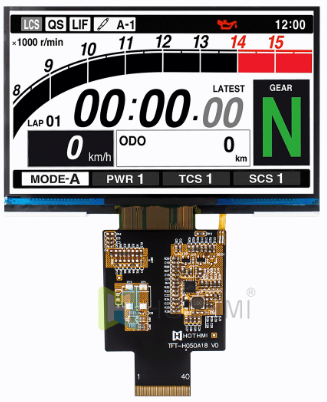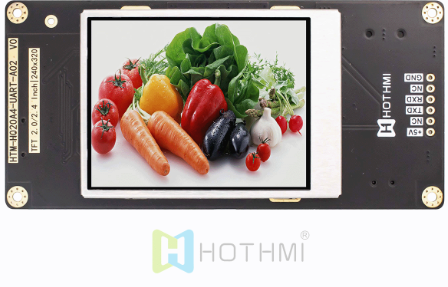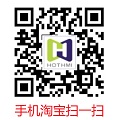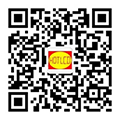Widespread use of TFT displays in outdoor applications:More and more TFT displays are being used in outdoor applications such as automotive displays, digital signage, and vending machines. In outdoor environments, high brightness light often causes images to fade and screen readability to decrease. The readability of TFT displays in direct sunlight and the life of LCD displays become critical. HOTDISPLAY has been committed to developing sunlight-readable LCD display solutions for many years and is very familiar with this TFT LCD solution.
Before discussing sunlight readability, let’s first understand visibility:Before we delve into how to make an LCD readable in sunlight, let's first understand what visibility is. Visibility is the ease with which an observer can find an object, or more scientifically, the relationship between the brightness contrast and the threshold of the human eye. Therefore, the higher the contrast of an object, the better its visibility.
What makes an LCD readable in sunlight? To ensure good readability of an LCD in bright outdoor environments, the brightness of the LCD screen needs to exceed the intensity of the light reflected from the display surface. For comfortable viewing by the human eye, the brightness of the LCD should be at least 2.5 times the light it reflects. Naturally, to make an LCD readable in sunlight, we can start from two aspects, namely, increase the brightness or reduce the reflection.
Increase brightness to make LCD readable in sunlight:
One way to make an LCD more readable in sunlight is to increase the brightness of the LED backlight. On a sunny day with direct sunlight, the ambient light brightness is about 6000 cd/m2. A typical TFT LCD with a touch screen reflects about 14% of the ambient light, which is about 840 cd/m2. Currently, many LCD displays use LED backlights as the light source. It is possible to increase the brightness of the LCD to 800 to 1000 nits to overwhelm the reflection of sunlight. Thus, a sunlight-readable TFT LCD is achieved.
However, this approach requires more backlight LEDs and/or higher drive currents. Disadvantages include higher power consumption, more heat dissipation requirements, increased product size, and shorter LED backlight life. Obviously, increasing the backlight brightness is not an ideal solution to make a TFT LCD readable in sunlight.
Using a transflective LCD:
Transflective TFT LCD has the characteristics of both transmission and reflection. A partial reflective mirror layer is added between the LCD and the backlight. This change converts part of the reflected ambient light into the light source of the LCD, increasing the brightness of the TFT display. However, the cost of semi-transmissive and semi-reflective TFT LCD is relatively high. At the same time, the partially reflective mirror layer will block part of the LCD backlight, making the LCD display effect not ideal indoors or under low-brightness ambient light, but this method is currently the best solution to ensure that the display can be read regardless of the lighting environment.
Hot Display has developed this type of transflective display, please click on the product catalog below to learn more.
5" transflective TFT display TN 800x480px sunlight readable RGB interface/touch screen optional
Reduces reflections to improve sunlight readability of TFT screens:
What causes light to reflect? When light propagates at the boundary of two transparent media, part of the light will bounce off the boundary, which is light reflection. Using the Fresnel equation, we can calculate the amount of reflected light. When the amount of reflection reaches a certain level, the display content can be read by the viewer. And this type of display has a protective effect on the eyes. For details, please read our blog post: The protective effect of reflective TFT on the eyes
To sum up, there are two solutions to make the display readable in sunlight: fully transparent polarizer by enhancing the backlight, using the full reflectivity of the polarizer, and semi-transmissive and semi-reflective.
For the characteristics and applications of these three methods, please read our related blog posts in detail: Transmissive, transflective and reflective displays
The advantages and disadvantages of the fully transparent polarizer, which can be compared by enhancing the backlight, using the full reflectivity of the polarizer, and the semi-transmissive and semi-reflective type, can be referred to the following table

For more information please contact us directly!









 Search
Search





